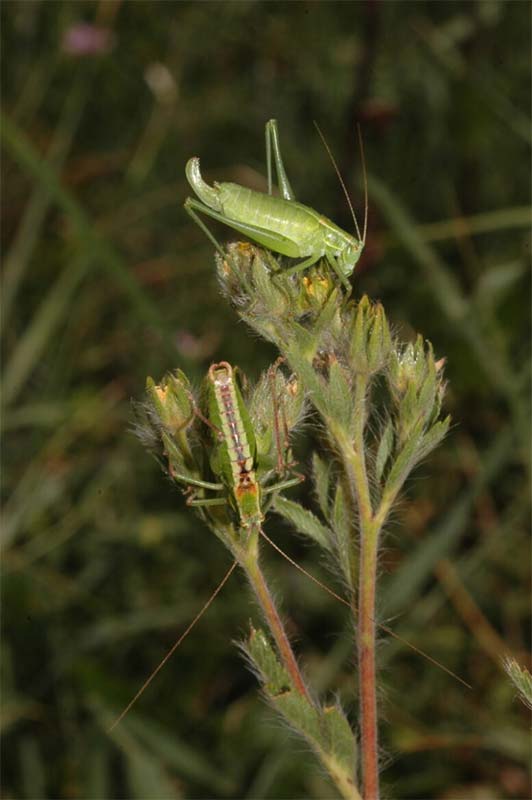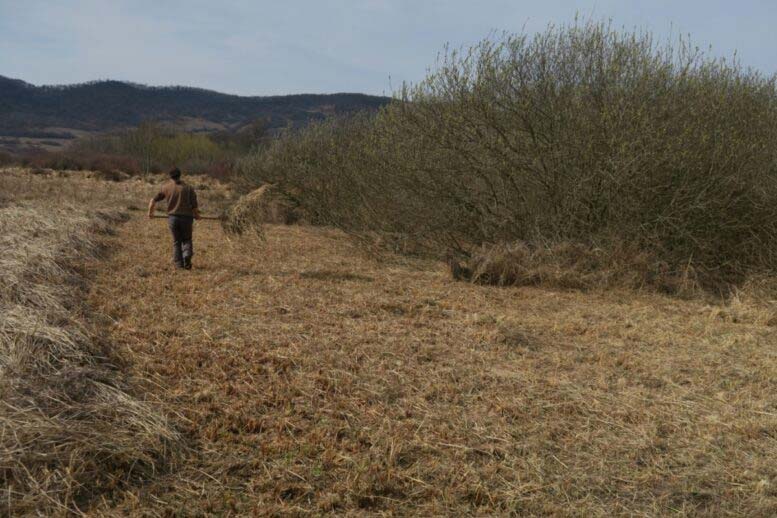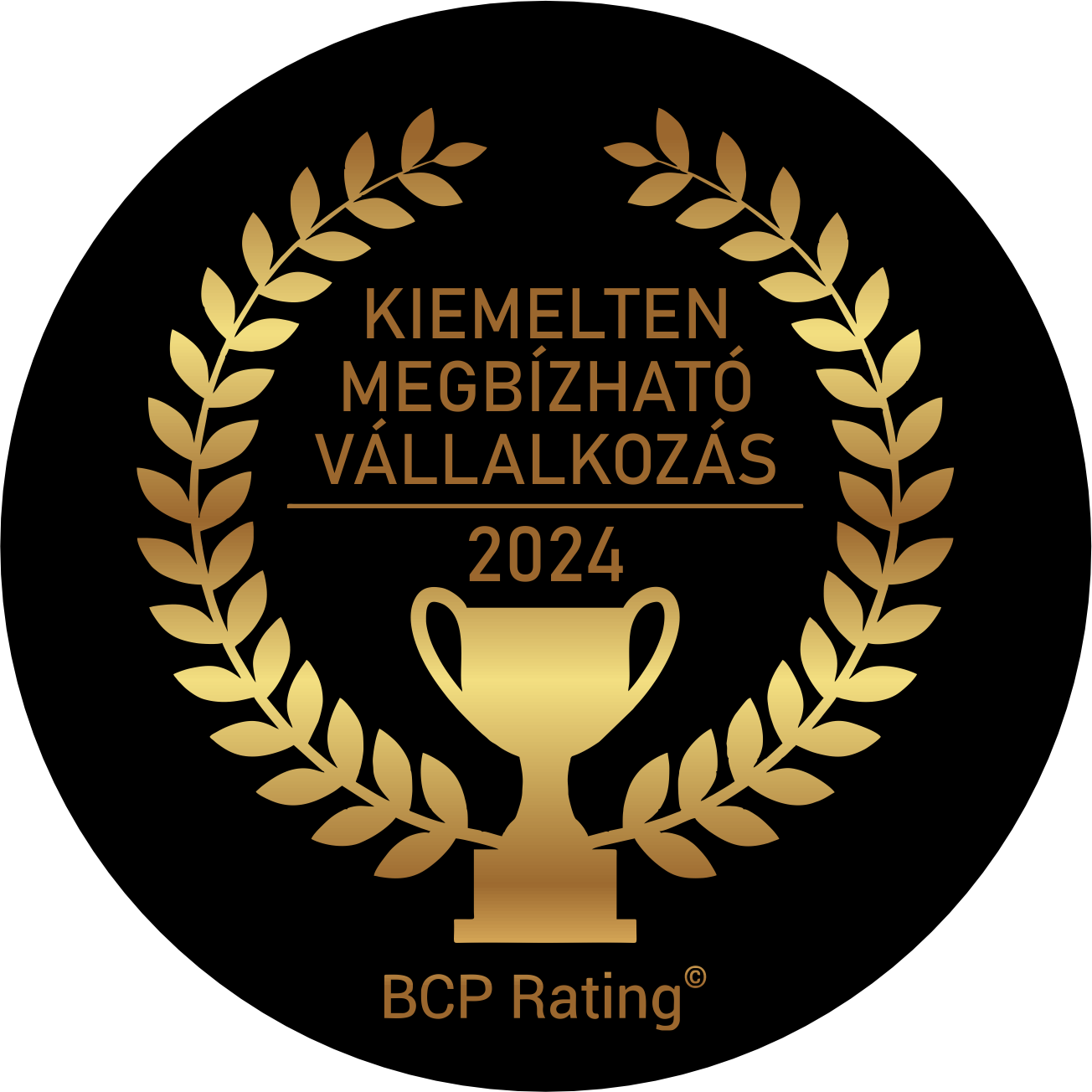The participants of the sample project: Syba Napvédélem Kft. (project financing, organization),
Bükki National Park Directorate (project professional support, planning, supervision)
Location: Buják 0151/17 hrsz
Name of affected Natura 2000 area: Bujáki Csirke-hegy and Kántor-rét nature conservation area
Natura 2000 site ID: HUBN20058
Official data sheet of Natura 2000 area
Natura 2000 area priorities and conservation objectives
Availability of the Natura 2000 area maintenance plan
The Kántor meadow in Buják was identified as an outstanding natural value by the staff of the Bükki National Park Directorate in 2001. The meadow’s special nature conservation role was given by the fact that the area was decorated with a species-rich population of woolly fen meadows, which are endangered throughout the country and have survived in only a few places in Cserhát, in very small patches. Although this fen (classified as a “Lime-loving fresh fen and sedge meadow” habitat of European community importance) barely reached 100 square meters, it was home to protected plant species such as broad-leaved and narrow-leaved woolly heather (Eriophorum latifolium, Eriophorum angustifolium), the marsh sedge (Epipactis palustris), marsh sedge (Orchis palustris), flesh-colored finger sedge (Dactylorhiza incarnata) and marsh snakegrass (Triglochin palustre).
The rest of the Kántor meadow is occupied by tall sedges, marsh meadows, and disturbed fresh tall sedges, with a significant amount of overgrowth. The protected large firefly (Lycaena dispar) of European community importance was found in the meadow, and the red-bellied ladybird (Bombina bombina) in smaller bodies of water. Due to its above values, the area, Bujáki Csirke-hegy and Kántor-rét, became a part of the Natura 2000 network in 2004 as one of the subdivisions of the nature conservation area of special importance.
In the following years, specialists commissioned by the national park board conducted surveys of several groups of animals in the area. As the most valuable species of molluscs, the thick-ribbed grass snail (Vallonia enniensis) was found in significant quantities. This species is a snail that is extremely rare throughout the country, deserving of nature conservation protection, and its populations always indicate the well-supplied, pristine bog-high-altitude habitats. The main result of the research on straight-winged birds was the discovery of one of the largest domestic populations of the protected Fuss-spider grasshopper (Poecilimon fussi). A large population of the flightless grasshopper species, which occurs only in a few places (usually in small numbers) in Hungary, lives on the cleared meadows of the neighboring Csirke-hegy, but a small part of the population also occupies the fresher grasslands of the Kántor-rét.
At the time of its discovery in 2001, the Kántor meadow was grazed with low intensity by cattle. Its traditional use (ensuring its long-term survival) was certainly manual mowing and periodic grazing. In the last 15 years, there has been no maintenance treatment in the area, which (combined with other factors, such as drying and the burdensome effect of chemicals entering from the surrounding fields) accelerated the deterioration of the area. The accumulation of grass debris, shrubbery, and afforestation (partly with invasive white acacia and American ash tree species) are now advanced. These effects, combined with the problems of water supply, caused a strong reduction of the typical fen vegetation, some of the fen species have not been found in the area for several years.
In 2017, the ownership background of the privately owned area changed, and the intention of the new owner was to outline a model project for the restoration and maintenance of the meadow for nature conservation purposes. The implementation of the project is financed by Syba Napvédélem Kft., in professional cooperation with the Bükki National Park Directorate. To start the project, in February 2017, the part of the area covering the bog was mowed in winter and the mow was carried down, after which the exact boundaries of the area were measured and marked. In the course of the latter, it became clear that in several places, in neighboring areas, farmers are cultivating the meadow part of the land as arable land. Cultivated parts of the area can play an important buffer role in terms of valuable habitats, which is why preparations have begun to restore them to lawns.
The planned restoration will continue on the basis of the Natura 2000 conservation plan for the Kántor Meadow and the available expert opinions. The most important aspects of this are as follows: In the habitat, it is absolutely necessary to preserve the natural surface of the nourishing water gushing(s), to examine whether the dirt road cutting through the upper part of the meadow causes drainage from the area. Any artificial river bed – no matter how shallow – can divert water from a large part of the habitat, which sooner or later can lead to complete transformation. It is an important task to eradicate the large numbers of large game animals in the meadow. These not only evaporate precious water with their open water surfaces, but also create opportunities for the establishment of invasive species. It is reasonable to fence off the habitat in order to prevent these, as well as cultivation and traffic that does not match the owner’s intentions. The movement of wild animals is a constant source of danger, but at the same time, dagonyas play a nature conservation role as small wetlands. From the point of view of nature conservation, the optimal solution is artificially created wetlands (properly designed groundwater pits) in the lower (eastern) part of the Kántor meadow.
A particularly important part of the restoration of the area is the maintenance of the mosaic of habitats. As part of this, the suppression of woody vegetation means the removal of small shrubs and patches of forest with different tree species by manual chainsaw work or by crushing stems with a tractor. These interventions will not be comprehensive, the shrubs, willow trees, tall ash patches will be partially left behind, in order to preserve the living organisms connected to them (which increase the biodiversity of the area). It is planned to maintain the patches restored in this way, along with the grassy patches returned from cultivation and the drier, weedy parts of the meadows, by mechanical stem crushing and then mowing if possible. In the most valuable, watery parts of the Kántor meadow (marsh meadow, marsh meadow, high spots), the planned treatment is regular (not necessarily annual, but every 2-3 years) manual mowing and the spreading of the mow. The time for this is primarily the winter, when the ground is frozen. In case of extreme drought, if we do not have to count on soil damage, the criterion of frozen soil can be omitted, and the period of manual mowing can also be postponed to autumn.
In the western, wooded part of the area, there is a large amount of construction and communal waste, the removal of which is also part of the project. The tasks to improve the condition of the area include the elimination of roads that have been trodden on in the area (which are not compatible with the cultivation branch). With the aim of increasing the protection of the area and the acceptance of the activities taking place there, the plans also include the preparation and placement of a sign showing the natural values of Kántor-rét and the goals of the project.
In 2018, we carried out manual mowing and machine crushing.
There is still the injection of invasive tree species, which must be done before the leaves fall.
The photos show the removal of the green mass after manual mowing of the inner area. This is very important to preserve the original flora of the lawn.




